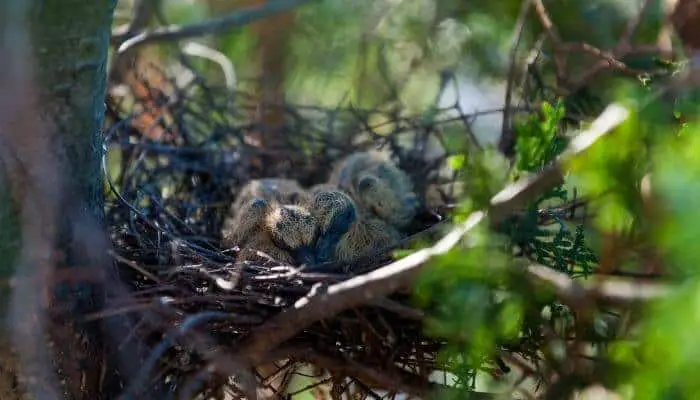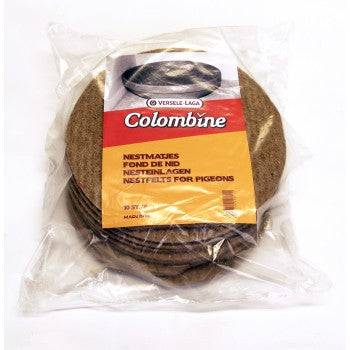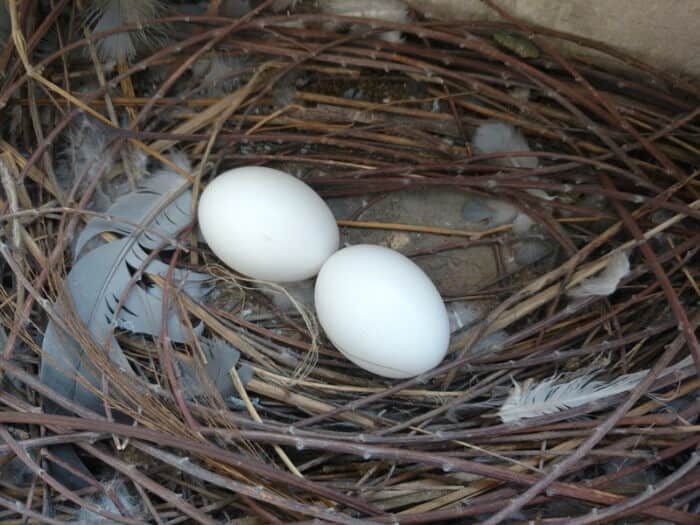Pigeons are found all over the world, but they seem to have a preference for nesting in areas with high human activity.

Pigeons want to nest where they feel safe and comfortable.
Pigeons aren’t fussy when it comes to nesting materials, in the wild twigs are typically used, but if you are looking for nesting material for your pet pigeon then any of these will work well:
As an Amazon Associate I earn a small fee from qualifying purchases made through Amazon links. This helps us run the site – thanks for your support!
- Tobacco stalks
- Pine needles
- Nest felt
- Nesting paper
- Straw
- Twigs
Pine needles and tobacco stalks make some of the best nesting materials because they work as natural pesticides keeping nests free from lice and mites.
1. Tobacco Stalks
Tobacco stalks also make great nesting material for pigeons.
Tobacco stalks provide insulation against cold temperatures well and can be used in areas with extreme temperature changes.
Tobacco is a natural nesting material that pigeons are attracted to because it smells like home, which makes them feel safe when they’re laying their eggs or raising the babies after hatching.
Tobacco stalks also help protect your pigeon from parasites by acting as a natural pesticide.
Tobacco stalks are also biodegradable and easy to clean up after.
A disadvantage of tobacco stalks as a nesting material is how hard these plants can become over time due at least partially to mold – making cleaning up potentially more difficult.
2. Pine Needles
Pine needles are a natural nesting material that pigeons often use in the wild.
Pine Needles are very easy to find and provide good insulation against cold temperatures and can be used in areas with extreme temperature changes.
They also help protect your pigeon from parasites by acting as an organic pesticide which repels lice and mites.
3. Nest Felt
Nest felt is a great nesting material for pigeons.

Nest-felt can be used in any season and does not need to have hay added on top of the layer that you put down as insulation against cold temperatures as it is a very well-insulated material.
The disadvantages here would only really apply during summer months when nests made entirely by felt may not be as cool and comfortable for the birds due to how dense and warm the material is.
4. Paper
Paper is one of the most common types of nesting material for pigeons because it’s lightweight and cheap!
It provides some insulation against cold temperatures but not much else, so you’ll need other items if you live in an area with extreme temperature changes.
Pigeons like paper because it’s lightweight and is soft enough that eggs won’t break easily if laid upon them or if they are stepped on.
The disadvantages of paper as a nesting material include not providing much insulation against cold temperatures so they will need other material for areas with extreme temperature changes; paper also provides little protection if an animal tries attacking your pigeon’s nest while she lays her egg(s).
5. Straw
Straw provides insulation against cold temperatures well and can be used in areas with extreme temperature changes.
The disadvantages of straw as a nesting material include not being easy to clean and the fact that it provides little protection if an animal tries attacking your pigeon’s nest while she lays her egg(s).
The other disadvantage is when using hay, there can be too much dust in one area which may cause respiratory problems for pigeons.
Straw also gets damps with squabs urinate on it, this can lead to lice and mites making a home in it.
6. Twigs
Twigs are one of the most common natural nesting materials that pigeons use in the wild.

They make for strong, sturdy and secure nests, though they don’t provide a huge amount of insulation.
Twigs are easily available wherever you live so make for a cheap and effective material that your pigeon will be very familiar and comfortable using.
Top Tip: If you want to give your pigeon somewhere extra secure to build their nest why not put together a DIY nest box for them.
We hope this has helped you find a suitable nesting material for your pigeon, thanks for reading!



